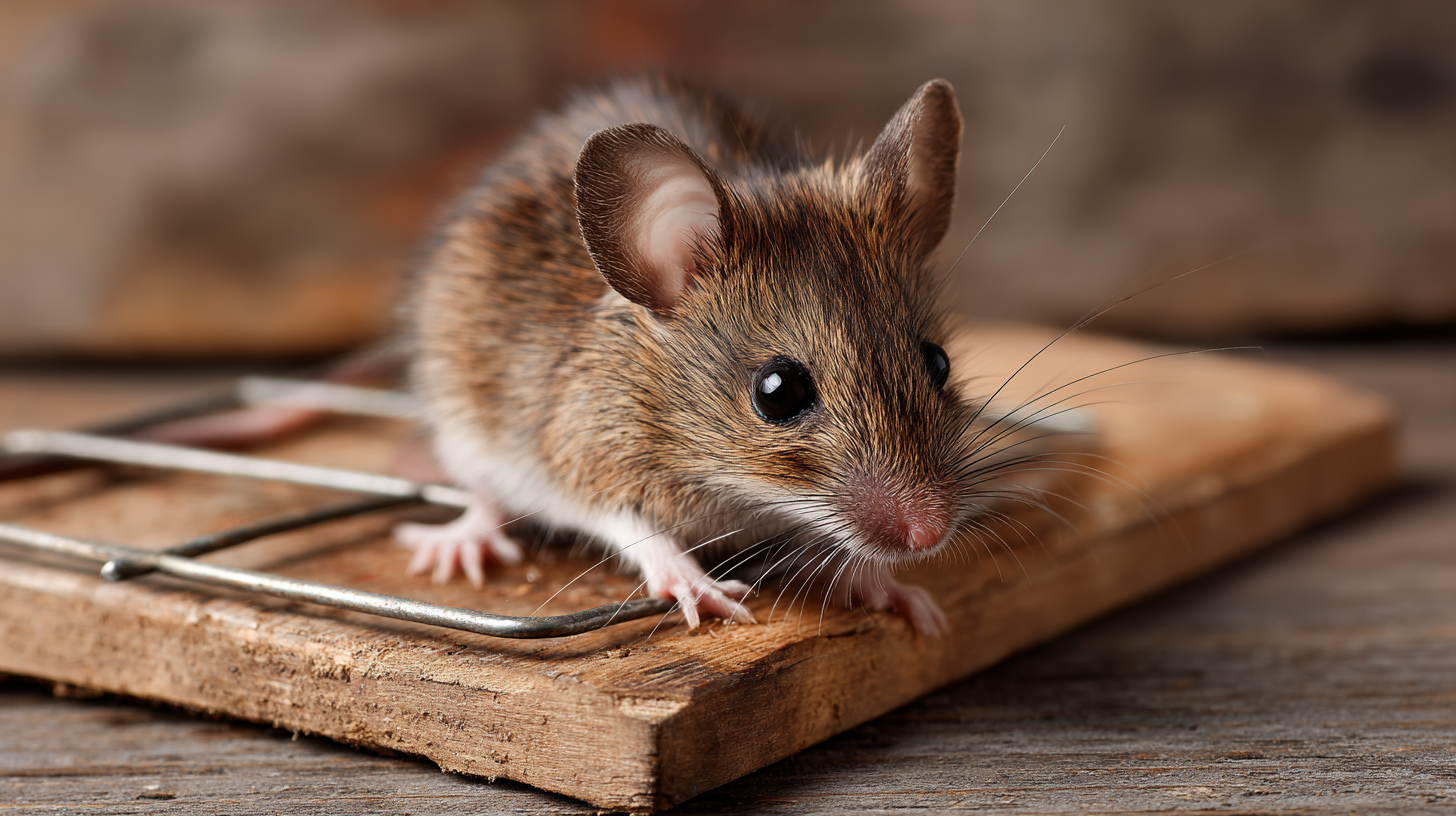
 Bird & Pigeon Pest Control
Bird & Pigeon Pest Control  Mice & Rat Pest Control
Mice & Rat Pest Control  Mole & Vole & Gopher Pest Control
Mole & Vole & Gopher Pest Control  Fly Insect Pest Control
Fly Insect Pest Control  Wasp & Bee Pest Control
Wasp & Bee Pest Control  Moth Pest Control
Moth Pest Control  Mosquito Pest Control
Mosquito Pest Control  Cockroach Pest Control
Cockroach Pest Control  Wildlife Pest Control
Wildlife Pest Control  Snake Pest Control
Snake Pest Control  Bed Bug & Flea Pest Control
Bed Bug & Flea Pest Control  Snail & Slug Pest Control
Snail & Slug Pest Control  Ant & Termites Pest Control
Ant & Termites Pest Control  Spider Pest Control
Spider Pest Control  Other Insect Pest Control
Other Insect Pest Control  Garden Products
Garden Products  Blog
Blog When it comes to keeping our homes safe and free from pests, particularly unwanted rodents, understanding the tools at our disposal is crucial. In this guide, we will delve into the science behind the Easy Set Mouse Trap, a popular choice among homeowners looking for effective rodent control solutions. Unlike traditional traps that often require intricate setup and may lead to undesired struggles, the Easy Set Mouse Trap is designed for simplicity and efficiency. It employs a straightforward mechanism that not only minimizes the risk of accidental triggering but also enhances the likelihood of successful capture. This article aims to unravel the underlying principles of how these traps work, examine their design features, and discuss their effectiveness in maintaining a pest-free environment. Homeowners will benefit from this comprehensive understanding, ensuring they can make informed decisions when addressing their rodent problems.

Easy set mouse traps utilize a combination of design principles and mechanical efficiency to effectively capture rodents with minimal effort. At the core of their functionality is a spring-loaded mechanism that delivers a rapid snapping action when triggered. This mechanism is sensitive enough to detect the slightest weight shift, ensuring that even the most cautious mice are caught without evasion. The design usually incorporates a bait area that attracts mice, drawing them into the trap's striking zone for a swift capture.
One of the key principles behind the effectiveness of easy set mouse traps is their user-friendly operation. Homeowners need only to set the trap with a simple flick of the wrist, reducing the risk of accidental injury or misplacement. Additionally, many models feature transparent windows that allow users to monitor trap activity without the need for direct contact. This practicality not only enhances safety but also promotes effective management of mouse populations, making easy set mouse traps a reliable choice for homeowners seeking an efficient pest control solution.
This chart displays the effectiveness of various types of mouse traps based on user reviews and success rates.
When selecting an easy set mouse trap, homeowners should consider five essential features to ensure effective pest control. First, the trap's sensitivity is crucial; it should be able to trigger at the slightest movement. This guarantees that even the smallest mice are caught, preventing them from slipping through undetected. Look for traps that come with adjustable sensitivity settings, allowing for customized use based on the specific environment.
Second, the design of the trap plays a significant role in its efficiency. A low-profile design can be beneficial for placing traps in tight spaces where mice are commonly found, such as under cabinets or along walls. Additionally, traps made from durable materials are preferable, as they are less likely to break or degrade over time. Third, consider the ease of use and setup. A trap that can be set quickly and easily saves time and effort, making it more appealing for busy homeowners. Finally, it's prudent to choose a trap that is easy to clean and reset, minimizing the hassle of dealing with captured rodents while enabling multiple uses without deterioration in performance.
| Feature | Description | Importance | Example |
|---|---|---|---|
| Easy Set Mechanism | Designed for quick and intuitive setup, requires minimal effort. | Saves time and enhances user convenience. | Quick-set traps available at most home improvement stores. |
| Durable Material | Constructed from high-quality, weather-resistant materials for longevity. | Longer lifespan and reliable performance against the elements. | Plastic or heavy-duty metal options. |
| Safety Features | Includes safety locks or covers to prevent accidental triggers. | Protects pets and children from being harmed. | Traps with locking mechanisms. |
| Effective Baiting System | Designed to hold various baits securely to lure mice effectively. | Increases the chances of attracting and catching mice. | Traps with bait stations or compartments. |
| Easy Disposal | Designed for straightforward disposal of captured mice. | Minimizes direct contact and promotes hygiene. | Traps with removable trays or compartments. |
When it comes to effective methods for controlling mouse populations in homes, easy set mouse traps offer homeowners a practical solution. Among the various options available, three primary types stand out for their efficiency and user-friendliness: snap traps, live traps, and electronic traps. Snap traps are particularly popular due to their quick action and straightforward design; they can swiftly eliminate mice, making them a top choice during peak rodent seasons.
Live traps are another viable option for those seeking a humane approach to pest control. These traps capture mice without harming them, allowing homeowners to release them at a distance from their property. While this method requires a bit more effort in terms of monitoring and relocating the captured mice, it can be a favorable choice for those concerned about animal welfare. Lastly, electronic traps provide a modern alternative, using batteries to deliver a quick shock to the mouse, ensuring a quick and mess-free disposal. Each of these trap types caters to different homeowner preferences, making them valuable tools in the fight against unwanted rodent visitors.

When it comes to successfully capturing mice using easy set traps, understanding
effective bait strategies is crucial.
According to a study from the National Pest Management Association, approximately
29% of homeowners report a mice infestation annually.
This makes knowing what attracts these pests more important than ever. Mice are drawn
to food sources with high-calorie content, particularly those with sugar and protein.
Common bait options include peanut butter, chocolate, and
sunflower seeds—each offering enticing scents that can lure mice into the
trap when strategically placed.
Additionally, a report published by the Journal of Pest Science indicates that visual
and olfactory cues play a significant role in attracting mice. Placing the bait at the
back of the trap ensures that the mouse has to fully enter the trap, increasing the
chances of capture. To further enhance effectiveness, some experts recommend adding a
small amount of nesting material near the bait; this appeals to the mouse's instinct to
seek safe, comfortable environments
while feeding. By implementing these targeted bait strategies, homeowners can
significantly improve their trapping success rates and better manage their rodent issues.
When it comes to effectively using easy set mouse traps, homeowners often fall into common pitfalls that can hinder their success. One crucial mistake is placing traps in ineffective locations. A study by the National Pest Management Association indicates that approximately 50% of homeowners do not utilize commonly known hotspots for rodent activity, such as near walls, corners, and areas where evidence of mice—like droppings or gnaw marks—has been found. Proper positioning can significantly increase the likelihood of trapping success.

Another frequent error is the improper use of bait. Many homeowners rely solely on cheese, neglecting more enticing bait options like peanut butter or sunflower seeds, which studies show can be more effective. Research highlights that peanut butter can be up to three times more effective than cheese due to its high fat content and aroma, making it more appealing to rodents. Additionally, failing to regularly check and reset traps can lead to missed opportunities, as mice can swiftly learn to avoid traps that haven't been updated. By addressing these mistakes, homeowners can dramatically improve their rodent control efforts.







